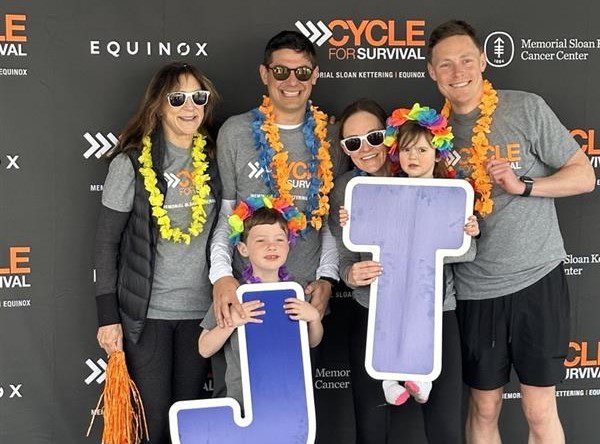blog August 28, 2019
What’s a ‘Myocardial Infarction’?
Closing the gap in clinical research participation through addressing health literacy
Do you know what myocardial infarction means? In more simple terms, it’s a heart attack. Myocardial infarction and heart attack mean the same thing, yet one is more likely to be understood by the general population than the other. Terms like myocardial infarction, hyperlipidemia (high cholesterol), or placebo (a sugar pill) can send a patient home confused or perhaps with more concerns about their health.
More than 36 million adults in the United States cannot read, write or do basic math above a third grade level (https://proliteracy.org/Adult-Literacy-Facts). This educational deficiency is linked to $232 billion in health care costs each year. If a person has low literacy skills, it directly affects how they receive, translate and adhere to health-related communications and overall health literacy. The National Network of Libraries of Medicine defines health literacy as, “the degree to which individuals have the capacity to obtain, process, and understand basic health information and services needed to make appropriate health decisions” (https://nnlm.gov/initiatives/topics/health-literacy). Health literacy requires a complex group of skills like reading, listening, translating, analyzing and decision-making capabilities that are all hindered when one has low health literacy.
In the wake of the effects associated with health literacy, healthcare costs, compliance, and informed decision making, there has been innovation and focus on addressing health literacy through disruptive, innovative strategies. With a common goal of improving health literacy for patients, there are initiatives to communicate health information around a patient’s care and experience, whether in clinical care or clinical research.
Face to Face
Face to face interactions are traditional ways health related information is disseminated to patients. While this is one of the oldest methods, these interactions are still very effective means of communication. There is great need to address how this information is being shared to ensure patients understand the information received regarding their health and participation in a clinical trial. One example of this is, “Living Room Couch Talk”. It challenges the clinical trial staff to speak as if they were talking to a friend, who perhaps they were speaking with for the first time about clinical research. By doing this, they avoid using complicated medical terminology and ultimately minimize risk of misunderstanding. In simplifying the language, it would be pertinent to continue engaging in an active conversation with the patient by asking open-ended questions or using “teach back”/ “show back” methods. This is where a patient repeats what is said or does what you just showed them to ensure that they understand what has been shared. At Javara, Investigators and Clinical Trial Navigators are charged with the great responsibility of ensuring the patient is adequately informed about their health, the clinical trial and processes to follow. They carefully walk the patient through each step of the trial including the informed consent, lab results, trial updates, and make themselves available post clinical trial participation to ensure they navigate back into their traditional care seamlessly.
Take Home Materials
The furniture industry has revolutionized how we are able to construct furniture in the comfort of our own homes. The industry has made putting together a kitchen table or bed frame easier than it traditionally has been. They have gone from step by step written instructions to visual aids that compliment what is being written. Through visuals, we can easily spot in our process where we have perhaps screwed on the wrong leg or left out a bolt. This same concept can be translated in communicating or reinforcing health information through visuals. Following the face to face interactions, providing the patient with resources they can take home to explain what has been shared with them during their visit will only enhance the patient’s experience and adherence to the trial.
What can hinder this two-fold patient communication strategy is literacy itself. What if a patient can’t read or is too embarrassed to ask someone to read for them? The patient’s health has been unintentionally hindered by providing them materials they can’t translate. Whether it is a flyer or a pamphlet, there should be an element in these materials that supports the reading impaired with strong visuals or graphics that mimic or translate what was communicated to them. By doing this, the patient has the opportunity to refer back to the information provided to ensure they are following any advice or adhering to procedures that ultimately better their health.
Digital Content
If handout materials with visual aids are not sufficient, digital content should be considered. Take the All of Us Campaign for example (https://allofus.nih.gov/about/protocol/all-us-consent-process#all-us-consent-process-videos-1). When a participant logs into their portal and opts in to be a part of a research study, they are taken through the informed consent process. The written text is complimented by visuals and video quizzes to reinforce that a patient understands what has been communicated. Whether it’s visual quizzes, a game, or interactive video, digital content is a strong reinforcer that the patient can receive and adhere to the health information presented. With more and more patients looking online for information and facts about their health or ailment, consider providing patients with information via their primary source of reference, the internet. Provide healthcare articles, updates on therapies and information about clinical trials that are easy for patients to understand and access. Include graphics and/or videos where appropriate to enhance the written content and engage the patient. Even the smallest touch, like having the ability to translate your website and materials to different languages, can make a big difference in how a patient receives, understands and perhaps shares information.
The goal of health literacy across clinical research and healthcare is not a one size fits all strategy. It is about innovating the traditional mechanisms of communication to patients and finding unique ways to help them understand. This allows patients to feel empowered in their care, lowers healthcare costs and could possibly change how people view clinical research. We challenge you to try something new in your company that addresses health literacy and changes the outlook of patients.
Share




